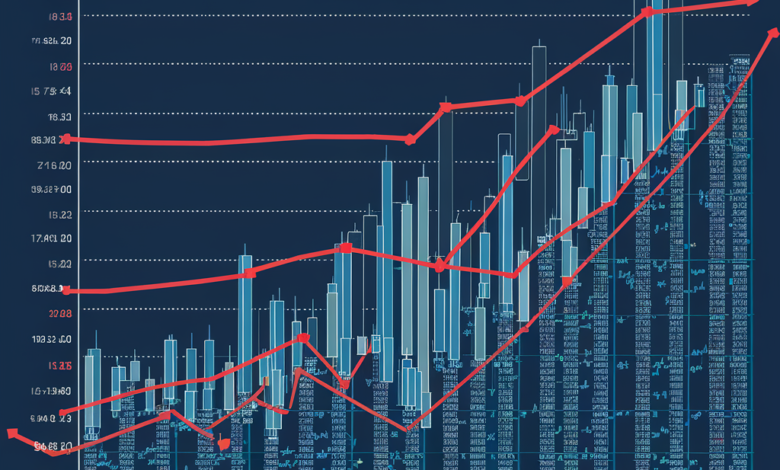w_relativestrength in stocks meaning

Introduction
In the dynamic world of stock trading, technical indicators like w_relativestrength in stocks meaning serve as powerful tools for identifying market trends and potential opportunities. Unlike traditional relative strength metrics, which compare a stock’s performance to a benchmark, W_RelativeStrength offers a nuanced approach by weighting price movements or incorporating volatility adjustments. This article delves into the meaning of W_RelativeStrength, its calculation methodology, and how traders leverage it to spot outperforming stocks, time entries, and manage risk. Whether you’re a novice or a seasoned trader, understanding this indicator can refine your analytical edge in competitive markets.
1. Defining W_RelativeStrength: Beyond Basic RS Metrics
W_RelativeStrength (W_RS) is an advanced variation of the classic Relative Strength (RS) indicator, designed to provide a more refined assessment of a stock’s momentum. While standard RS compares a stock’s price performance to a benchmark (e.g., S&P 500) over a set period, W_RS introduces weighting factors—such as exponential smoothing, volume adjustments, or volatility scaling—to reduce noise and highlight sustainable trends. For instance, a W_RS score might assign greater importance to recent price changes or account for trading volume to filter out low-conviction moves. This makes it particularly useful in volatile markets where raw RS values can be misleading.
2. How W_RelativeStrength Is Calculated: Key Formulas
The exact formula for W_RelativeStrength varies depending on the weighting method employed, but a common approach integrates the following steps:
- Price Performance Ratio: Calculate the stock’s percentage price change over a defined period (e.g., 14 days).
- Weighting Adjustment: Apply a weighting factor, such as an exponential moving average (EMA) to emphasize recent data or a volume multiplier to reflect trading activity.
- Example:
W_RS = (Stock’s EMA-adjusted return / Benchmark’s EMA-adjusted return) × 100.
- Example:
- Volatility Normalization: Scale the result by the stock’s historical volatility to account for risk (e.g., dividing by the Average True Range).
This layered approach helps distinguish genuine strength from short-term spikes, offering traders a clearer signal for decision-making.
3. Interpreting W_RelativeStrength Values: Bullish vs. Bearish Signals
W_RS values are typically plotted on a scale where readings above 100 indicate outperformance against the benchmark, while values below 100 suggest weakness. However, context is key:
- High W_RS (e.g., >120): A stock is showing sustained upward momentum, but overbought conditions may warrant caution.
- Rising W_RS Line: Increasing strength relative to the benchmark, often a buy signal if supported by volume.
- Divergences: If a stock’s price hits new highs while W_RS declines, it may signal weakening momentum and a potential reversal.
Traders often combine W_RS with other tools like moving averages or RSI to confirm trends and avoid false positives.
4. Practical Applications: How Traders Use W_RelativeStrength
W_RS shines in several trading strategies:
- Sector Rotation: Identify sectors/stocks with improving W_RS scores to allocate capital to leaders.
- Breakout Confirmation: Use rising W_RS to validate breakouts above resistance levels.
- Risk Management: Avoid stocks with deteriorating W_RS during market downturns.
For example, a swing trader might scan for stocks with W_RS crossing above a 50-day average while volume expands, signaling institutional interest.
5. Limitations and Considerations
While powerful, W_RelativeStrength has caveats:
- Lagging Nature: Like all momentum indicators, it relies on historical data and may lag during rapid market shifts.
- Benchmark Dependency: Results vary based on the chosen benchmark (e.g., sector ETF vs. broad market index).
- Overfitting Risk: Custom weighting methods can backtest well but fail in live markets if overly optimized.
Pairing W_RS with fundamental analysis or trend-following indicators can mitigate these risks.
Conclusion
W_RelativeStrength elevates traditional relative strength analysis by incorporating weighted factors that refine momentum signals. For traders, mastering this tool means better identifying high-probability opportunities while filtering out market noise. By integrating W_RS into a broader strategy—and understanding its nuances—you can enhance your ability to capitalize on stock trends with greater precision. Whether for short-term trades or long-term portfolio adjustments, W_RS offers a data-driven edge in navigating the markets’ ebbs and flows.



